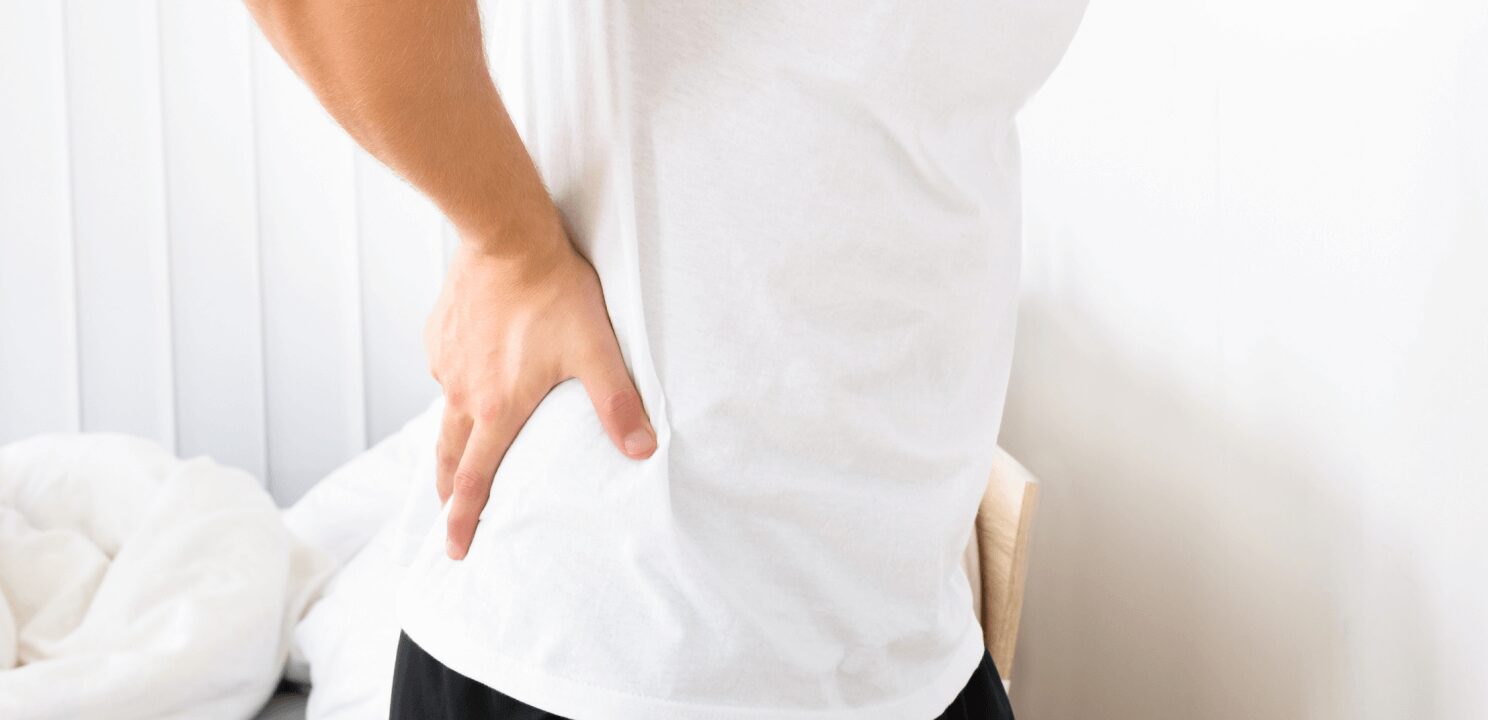
What is Hip Pain?
Hip pain refers to persistent discomfort or pain felt in or around the hip joint, which is where the thigh bone (femur) meets the pelvis. It can result from injuries, overuse, arthritis, bursitis, or referred pain from other areas, significantly affecting mobility, stability, and daily activities.
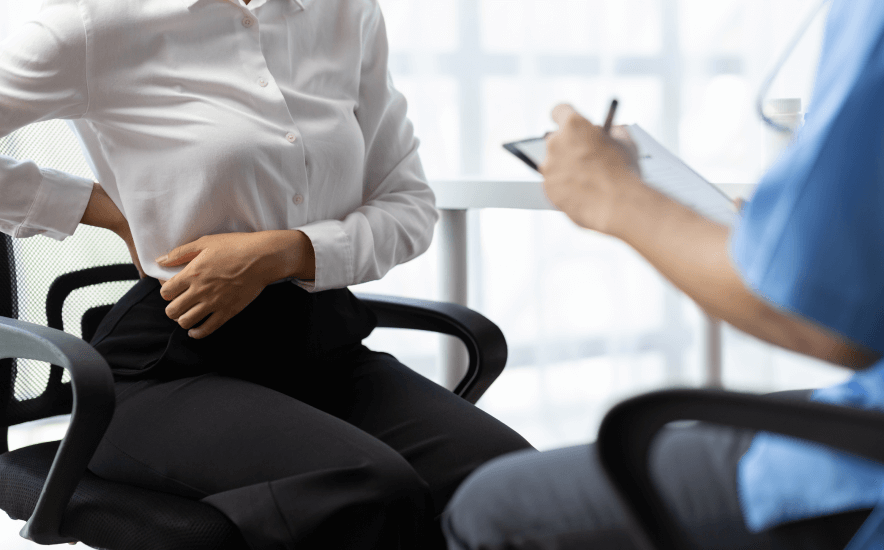
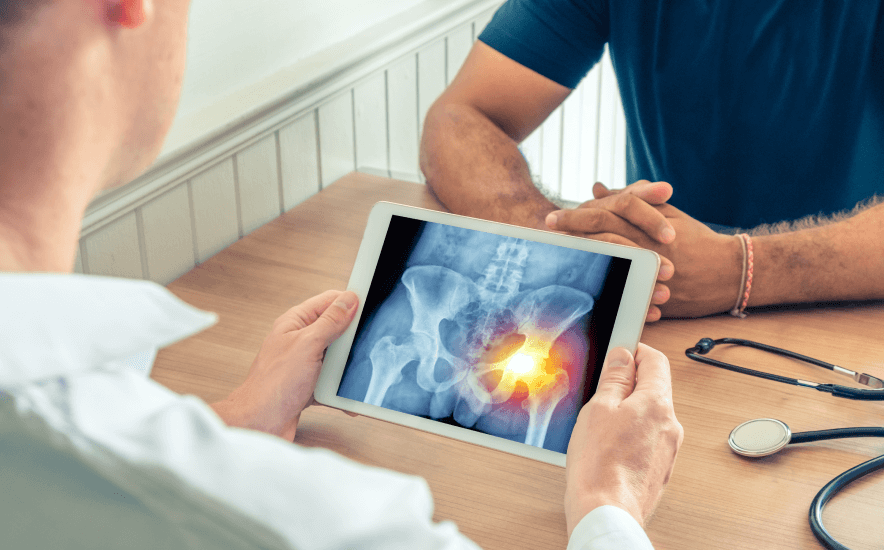
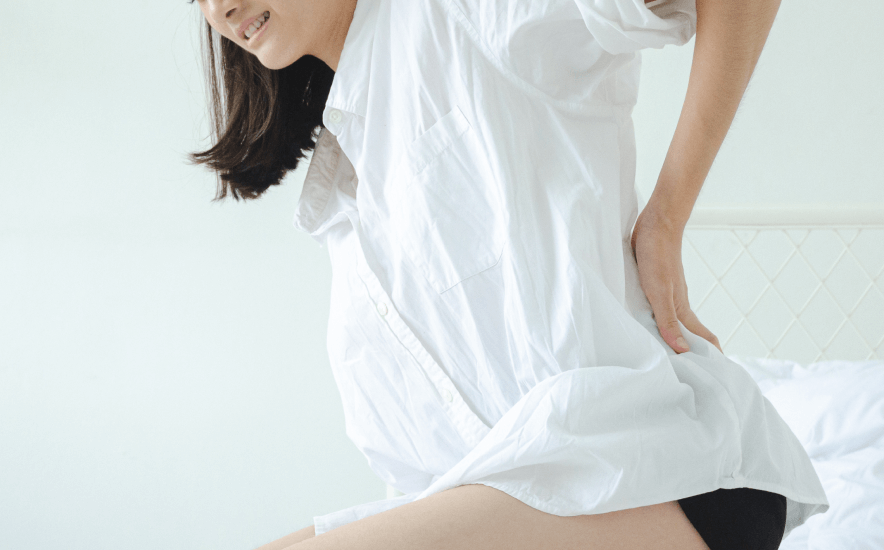
Related Diagnoses
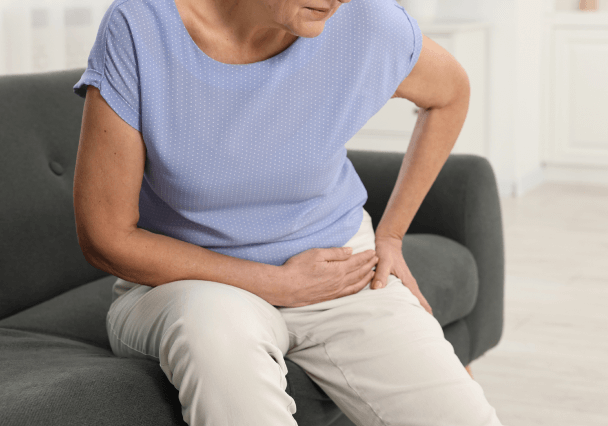
Degenerative Osteoarthritis

Bursitis
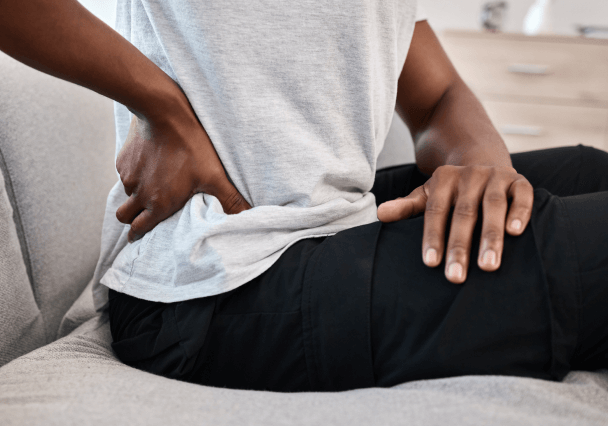
Labral Tear

Hip Impingement Syndrome
Expanded Guide
- Degenerative Osteoarthritis: Hip osteoarthritis, also known as degenerative joint disease (DJD), is a chronic condition where the cartilage in the hip joint gradually deteriorates. The hip is a ball-and-socket joint that allows for smooth movement, cushioned by cartilage that prevents bones from rubbing against each other. As this cartilage breaks down, the bones in the joint begin to make direct contact, leading to pain, inflammation, stiffness, and restricted movement. Over time, the body may try to compensate for the loss of cartilage by growing extra bone, called osteophytes (bone spurs), but these growths can worsen the condition by further limiting joint mobility. Several factors contribute to the development of hip osteoarthritis. Age is a primary risk factor, as cartilage naturally wears down over time, making older adults more vulnerable. Previous injuries to the hip, such as fractures or dislocations, can increase the likelihood of early-onset osteoarthritis. Genetics may also play a role, with a family history of osteoarthritis increasing the risk. Obesity adds extra stress to the hip joint, accelerating cartilage breakdown, while repetitive stress from activities like heavy lifting or sports can also contribute. Additionally, developmental conditions like hip dysplasia, where the hip joint forms abnormally, can make individuals more susceptible to early degeneration. The symptoms of hip osteoarthritis typically develop gradually and worsen over time. Pain is commonly felt in the groin, outer thigh, or buttock and may radiate to the knee. Initially, the pain may only occur during or after physical activity, but as the condition progresses, it can persist even during rest or at night. Stiffness, particularly in the morning or after periods of inactivity, is another common symptom, making it difficult to move the hip joint. As the cartilage wears away and bone spurs form, the range of motion in the hip decreases, leading to difficulties with activities like walking, climbing stairs, or bending. Some people may also experience a grinding or clicking sensation, known as crepitus, caused by the rough surfaces of the bones rubbing together. In advanced cases, the joint may feel unstable, or “lock,” making it hard to bear weight on the affected leg.
- Bursitis: Hip bursitis is a condition marked by the inflammation of the bursae, small fluid-filled sacs that cushion the hip joint and reduce friction between bones, tendons, and muscles. The most commonly affected bursa in the hip is the trochanteric bursa, located on the outer part of the hip near the bony prominence of the thigh bone (femur). When this bursa becomes inflamed, a condition known as trochanteric bursitis, it can cause pain on the outer side of the hip and thigh, particularly during movement. Less commonly, inflammation can occur in the iliopectineal bursa, leading to pain in the groin area. Hip bursitis can result from repetitive stress or overuse, such as running, climbing stairs, or standing for long periods, which irritates the bursae over time. Direct trauma to the hip, underlying medical conditions like rheumatoid arthritis or osteoarthritis, poor posture or gait mechanics, and previous hip surgeries can also contribute to the development of bursitis. Symptoms typically include sharp, localized pain on the outer part of the hip, which can spread and become more of a dull ache. This pain may worsen with physical activity, such as walking or climbing stairs, and can also increase after long periods of sitting or standing. Tenderness and swelling are common around the affected area, and lying on the side of the inflamed hip can be particularly uncomfortable.
- Labral Tear: A hip labral tear is an injury to the labrum, a ring of cartilage that surrounds the outer rim of the hip joint’s socket. The labrum plays a crucial role in stabilizing the hip by deepening the socket where the head of the femur (thigh bone) fits, allowing for smooth movement while cushioning the joint. A tear in this cartilage can result from trauma, such as falls or accidents, repetitive hip movements common in sports like soccer or hockey, or structural issues like hip impingement, where abnormal contact occurs between the bones in the hip joint. Conditions like hip dysplasia can also make some individuals more susceptible to labral tears. The main symptoms of a hip labral tear include pain in the hip or groin area, stiffness, and a sensation of clicking, locking, or catching in the hip joint. These symptoms often worsen with activities that involve hip movement, such as twisting, pivoting, or squatting, and can also be aggravated by prolonged sitting or standing.
- Hip Impingement Syndrome: Hip femoroacetabular impingement (FAI) is a condition where abnormal contact between the bones of the hip joint leads to pain and damage. The hip joint is a ball-and-socket structure, with the head of the femur (thigh bone) fitting into the acetabulum (the socket of the pelvis). In FAI, the shape of either the femoral head or the acetabulum, or both, is irregular, causing them to rub against each other during movement. There are two main types of FAI: cam impingement, where the femoral head is not perfectly round, and pincer impingement, where the acetabulum covers too much of the femoral head. Some people have a combination of both, known as mixed or combined impingement. This abnormal contact can damage the cartilage and labrum (a ring of cartilage around the hip socket that stabilizes the joint), leading to pain, stiffness, and limited range of motion. FAI can develop due to developmental abnormalities, repetitive stress on the hip joint from activities like running or soccer, or genetic predispositions. The condition often leads to groin or hip pain, especially during or after physical activity, and may also cause stiffness, reduced range of motion, and a sensation of clicking or catching in the hip joint.
Frequently Asked Questions
Have more questions? Schedule a consultation with Dr. Patel to gain additional insights and discuss treatment options. We are committed to advancing your health through patient education and a safe, minimally invasive approach.
A doctor will perform a physical examination, review your medical history, and may order imaging tests such as X-rays, MRIs, or CT scans to determine the cause of your hip pain.
Non-surgical treatments include physical therapy, anti-inflammatory medications (NSAIDs), corticosteroid injections, rest, ice or heat therapy, stretching, and low-impact exercises to strengthen muscles around the hip joint.
The duration of hip pain can vary greatly depending on the cause, severity, and treatment approach. Acute hip pain, often resulting from injuries such as muscle strain, tendonitis, or bursitis, typically lasts a few days to several weeks. With appropriate rest, ice or heat therapy, and care, this pain often resolves relatively quickly. In contrast, chronic hip pain caused by conditions like osteoarthritis, rheumatoid arthritis, or hip labral tears can persist for months or even years without proper management, and it tends to worsen over time if left untreated. After a hip injury, such as a fracture, or following surgery like a hip replacement, pain can last for several weeks to months, depending on the severity and the rehabilitation process. Pregnancy-related hip pain, commonly experienced in the later stages of pregnancy, usually subsides after childbirth but may linger for a few weeks postpartum. Additionally, hip pain caused by referred pain from issues like sciatica or lower back problems can last until the underlying condition is treated. Several factors influence the duration of hip pain, including the type of treatment pursued, the severity of the underlying condition, and lifestyle choices. Proper treatment, including physical therapy and medication, can shorten the pain's duration, while lack of treatment or continued stress on the joint may extend recovery time. While minor injuries often improve within a few days or weeks, more serious conditions or injuries can lead to long-term or recurrent pain, making it essential to seek medical advice if hip pain persists beyond a few weeks.
Hip pain can lead to various complications, particularly if the underlying cause is not properly diagnosed or treated. One of the primary concerns is the loss of mobility, as chronic hip pain can limit a person’s range of motion, making everyday activities like walking, sitting, or climbing stairs difficult. This reduced mobility can lead to muscle weakness, joint stiffness, and worsening pain over time. If conditions such as osteoarthritis or rheumatoid arthritis are left untreated, they can cause significant damage to the hip joint, leading to bone degeneration and potentially requiring surgical intervention, like a hip replacement. Additionally, persistent hip pain can alter a person’s gait, which may cause other musculoskeletal issues in the knees, lower back, or feet due to the uneven weight distribution. Another serious complication is the increased risk of falls, especially in older adults, as hip pain can cause instability and balance issues. These falls can result in fractures or other severe injuries. The emotional and psychological impact of chronic hip pain is also significant, with many individuals experiencing anxiety, depression, and a reduced quality of life due to the constant discomfort and limitations on daily activities. If surgery is needed, complications such as infection, blood clots, or joint dislocation can occur, though these risks are generally low. Moreover, untreated hip pain can lead to chronic pain syndromes, making the condition harder to manage over time. Physical inactivity resulting from hip pain can lead to weight gain, which further exacerbates stress on the hip joints and increases the risk of other health problems, such as heart disease, diabetes, and high blood pressure. For these reasons, timely diagnosis and proper treatment are essential to prevent complications and maintain overall mobility and well-being.
Gramercy Center
Take the first step towards a healthier life by scheduling your initial consultation with Dr. Patel. At our clinic, we specialize in minimally invasive procedures that offer faster recovery, improved function, and decreased pain. Our client-centered approach ensures that you receive the highest quality care tailored to your unique needs. We look forward to offering you an exceptional experience.
